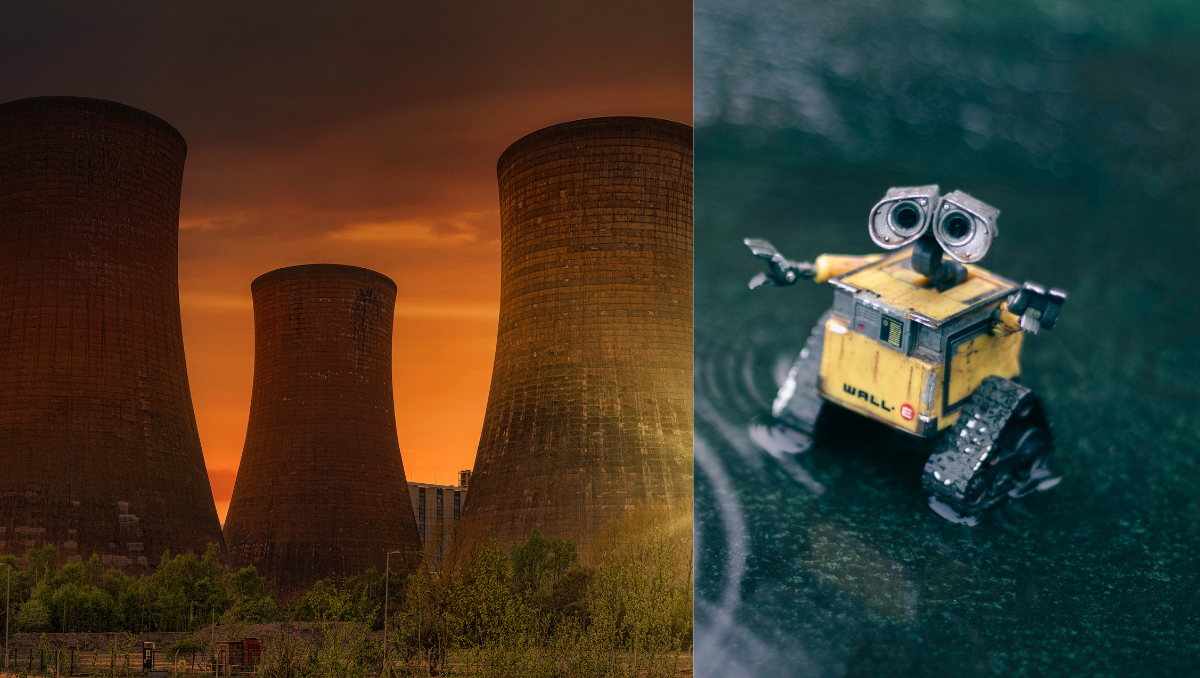For the first time since the 2011 meltdown, the operator of Japan’s demolished Fukushima Daiichi nuclear power plant showed on Tuesday how a remote-controlled robot would extract small fragments of melted fuel debris from one of three damaged reactors later this year.
Table of Contents
About the Fukushima Daiichi Nuclear Reactor
With six boiling water reactors, the Fukushima Daiichi Nuclear Plant was first put into service in 1971. At 4.7 GWe in total capacity, these light water reactors powered electrical generators, placing Fukushima Daiichi in the world’s top 15 nuclear power plants. The first nuclear power facility to be planned, built, and operated in cooperation with Tokyo Electric Power Company (TEPCO) and General Electric was Fukushima. TEPCO also manages the sister nuclear reactor, Fukushima Daini, sometimes called “number two,” located 12 kilometers (7.5 miles) south.
Fukushima Daichi Nuclear Power Station. (Fukushima, Japan) Photo Credit: Tokyo Electric Power Co., TEPCO
From 2011 Earthquake and Tsunami to Reactor Meltdown: Timeline
The magnitude 9.1 earthquake and tsunami that struck Japan on March 11, 2011, severely damaged the plant, stopping the reactor cooling systems and resulting in radioactive leaks that still occur today within a 30-kilometer radius around the facility.
The 20-kilometer evacuation zone was designated off-limits by the Japanese government on April 20, 2011, and may only be accessed under official government supervision.
The factory was opened to the media for the first time in November 2011. They described a sight of destruction, with three reactor buildings destroyed, radiation levels extremely high, and the grounds littered with torn trucks, bent water tanks, and other tsunami-related debris.
In response to requests from the community for a decision, the TEPCO board of directors decided to decommission the plant on July 31, 2019. It is anticipated that decommissioning will take more than 40 years to finish, during which time spent nuclear fuel will be moved from spent fuel pools to on-site dry cask storage.
In 2023, concerns about the safety of the water prompted United Nations (U.N.) inspectors to sample a fish market close to the Fukushima nuclear power facility.
TEPCO and the recovery plan
By October 2024, Tokyo Electric Power Company Holdings intends to test the removal of debris from the primary containment vessel of the Fukushima Daiichi No. 2 reactor using an extensible pipe robot in the “telesco-style.”
Over two years have passed since that work was scheduled. Delays in the removal of melted gasoline highlight how difficult it would be to recover from the magnitude 9.0 earthquake and tsunami that struck in 2011. The removal of melted fuel was originally scheduled to start in late 2021.
A device with tongs slowly descended from the telescopic pipe to a pile of gravel and picked up a granule during the demonstration at the shipyard of Mitsubishi Heavy Industries in Kobe, western Japan, where the robot was built.
Less than 3 grammes (0.1 ounce) of debris will be removed by TEPCO during the test at the Fukushima plant.
Tokyo Electric Power Company Holdings, also known as TEPCO, the operator of Japan’s wrecked Fukushima Daiichi nuclear power plant, reveals a robot to be used to retrieve debris at the power plant in Kobe, western Japan, Tuesday, May 28, 2024. (Kyodo News via AP)
“We believe the upcoming test removal of fuel debris from Unit 2 is an extremely important step to steadily carry out future decommissioning work. It is important to proceed with the test removal safely and steadily.”
Yusuke Nakagawa, a TEPCO group manager for the fuel debris retrieval program
Within the three damaged reactors, some 880 tonnes of highly hazardous melted nuclear fuel are still present. The government and TEPCO’s 30- to 40-year cleanup timetable for Fukushima Daiichi has drawn criticism for being unduly optimistic. Every reactor has a varied level of damage, thus, plans must take that into account.
For the reactors to be decommissioned, a deeper comprehension of the melted fuel debris inside of them is essential. Earlier this year, TEPCO sent four tiny drones into the main containment vessel of the No. 1 reactor to take pictures in places that robots had not yet reached.

2 Comments
kSiRGDlEKjsJx
iKXrgCORAYbjvN